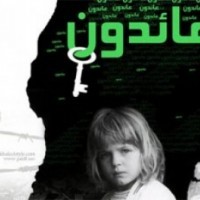 The education sector is one of the most important and widest areas served by UNRWA in Syria. According to statistics of 31/12/2002 the number of schools managed and sponsored by UNRWA in Syria was 113 primary and middle schools, with the number of pupils registered for the academic year 2001/2002 64,258 pupils, 48.9% of whom are female.
The education sector is one of the most important and widest areas served by UNRWA in Syria. According to statistics of 31/12/2002 the number of schools managed and sponsored by UNRWA in Syria was 113 primary and middle schools, with the number of pupils registered for the academic year 2001/2002 64,258 pupils, 48.9% of whom are female.
1,818 staff out of the 2,956 total working for the UNRWA in Syria are in the teaching sector, making up 61.5% of UNRWA staff in Syria. According to surveys undertaken by the Palestinian statistics office in association with the UNICEF between 1994 and 1998, the number of Palestinian refugees with certificates of completion of primary education was 32%, while the percentage of those who completed middle (year 9) education was 16% and that of those who completed secondary education (including baccalaureate) was 8%. The percentage of those with diplomas from middle schools was 7% and that of university students was 3%. The illiteracy rate amongst Palestinian refugee adults was 11%.
The number of Palestinian refugees in Syria who are registered with UNRWA according to the Agency’s 2002 records is 405,601. 24,83 of these live in Der’aa district, either in its refugee camp or the Palestinian communities in the district. Palestinians living in Der’aa are divided into refugees who came in 1948 who number 9,342, including 4,869 females, according to the General Committee of Arab Palestinian Refugees in Syria, as of 30/12/2002.
The number of Palestinians living in Der’aa refugee camp- in the town centre, is 8,002, while the number of Palestinians living in Der’aa communities- in the town and villages- is 16,003, according to the General Committee’s survey of 2/5/2002. The number of Palestinian refugees living in Der’aa, according to the same survey, with the number of refugees from their hometown in Palestine in brackets is: Safad (3,637), Haifa (4,820), Tabaria/Tiberias (2,787), Akka (332), Nasira/Nazareth (1,202), Jerusalem (112), ar-Ramla (657), al-Lidd (14), Bisan (402), Gaza (635), Tulkarem (514), Nablus (13), Jenin (5), Hebron/al-Khalil (41).
The number of Palestinian immigrants living in Der’aa, according to the same survey, with the number of refugees from their hometown in Palestine in brackets is: Safad (2,841), Haifa (136), Tabaria/Tiberias (5,010), Nasira/Nazareth (380), ar-Ramla (35), Bisan (940).
UNRWA in Der’aa provides, manages and sponsors a number of schools in Der’aa (10 primary schools, 5 middle schools), situated around the town and the villages. The Der’aa camp alone has 4 primary schools (Kafr Kinna, Taitaba, as-Safsaf, Kafr Lam) as well as 2 middle schools (Tabaria and Ain Karem).
As for the Palestinian communities in Der’aa, most prominently Mazirib and Jellin, they contain 6 primary schools (Abbasiyya, Ter’aan, Ain az-Zaytoun, Quds, Askalan, Araba) and 3 middle schools (Ayn az-Zaytoun, Quds, Askalan). It must be noted that the pupils registered at the Agency’s schools are not all the pupils in the Der’aa district, as there is a number of pupils registered at Syrian governmental schools, and others in private schools.
There are no UNRWA secondary schools in the entire district, and no colleges or universities, as there is one UNRWA college in Syria, the DTC in Damascus, and no secondary colleges or university campuses in the whole of Syria.
Teachers working in UNRWA schools in Syria are required to participate in training courses during their work period, with the number of teachers participating in such courses in the academic year 2001/2002 reaching 75, according to the newsletter of the UNRWA in Syria of April 2003.
Source: Damascus - Shireen al-Shirafi




